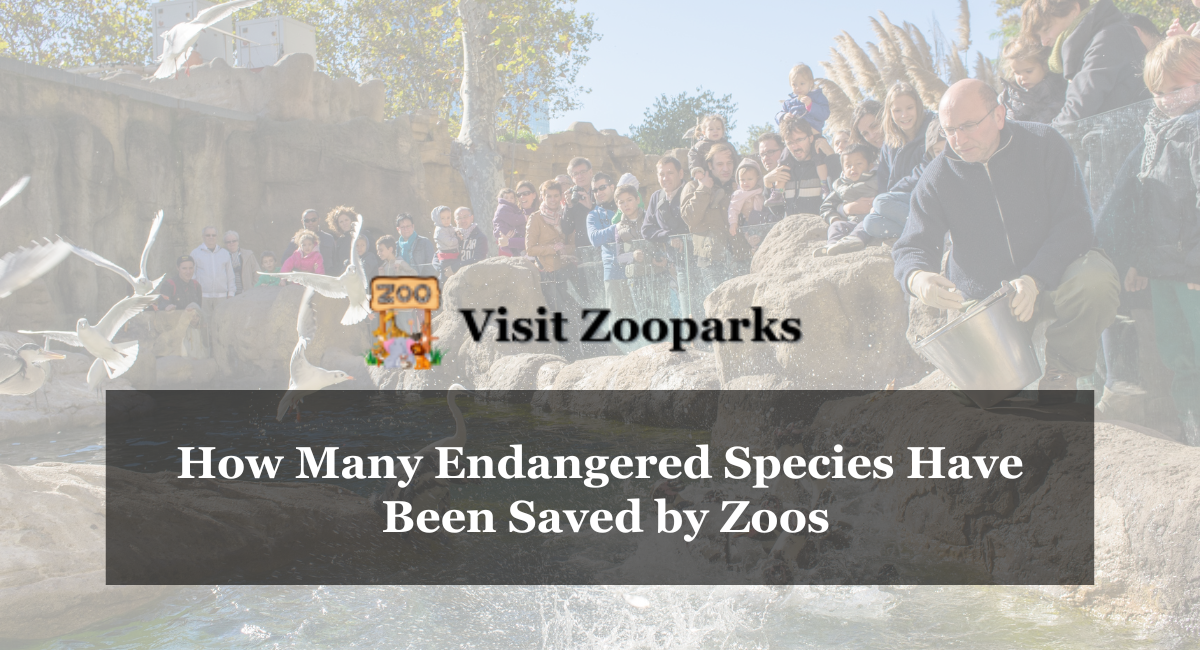Have you ever gazed into the majestic eyes of a tiger or marveled at the graceful movements of a giraffe?
Zoos offer us a window into the animal kingdom, fostering a sense of wonder and appreciation for the incredible diversity of life on Earth. But did you know that zoos are also playing a critical role in saving species from the brink of extinction?
While the image of animals pacing in cages might come to mind, modern zoos are far from that. Many accredited zoos in the US have transformed into conservation centers, actively involved in species survival programs.
These programs address the very reasons animals become endangered in the first place – habitat loss, poaching, and disease.
Breeding Programs: A Lifeline for Endangered Animals
Imagine a world without California condors soaring through the skies or playful black-footed ferrets bouncing across the grasslands. These species, and many others, were once teetering on the edge of extinction. But thanks to zoo breeding programs, they’re getting a second chance.
These programs meticulously manage the reproduction of endangered animals in zoos.
Experts create breeding pairs, considering genetics to ensure healthy offspring and maintain a diverse gene pool. Advanced veterinary care ensures the animals thrive, with specialized diets and environments mimicking their natural habitats as closely as possible.
The ultimate goal? To establish healthy, self-sustaining populations that can be reintroduced back into the wild, where they belong.
Reintroduction: The Grand Challenge
Reintroduction is no easy feat. It requires meticulous planning and collaboration between zoos, wildlife agencies, and local communities.
Scientists first assess the health of the wild habitat, ensuring it can support the reintroduced animals. This might involve habitat restoration efforts to address previous threats like poaching or invasive species.
Next comes the preparation of the animals themselves. Zoos train them to survive in the wild, teaching them essential skills like hunting, foraging, and avoiding predators.
This “rewilding” process can take generations, as animals born in captivity may not have the natural instincts needed for survival.
The release itself is a momentous occasion. Animals are carefully monitored to ensure their adaptation and integration into the wild population.
The success stories are numerous: the American bison, once hunted to near extinction, now roams the Great Plains thanks to reintroduction efforts.
The majestic California condor, with its wingspan reaching nearly 10 feet, has seen its numbers rise from a mere 22 individuals to over 500 thanks to a collaborative breeding and reintroduction program.
Beyond Breeding: Zoos as Conservation Hubs
Zoos contribute to conservation in ways that extend far beyond breeding programs. They fund vital research projects, studying the threats faced by endangered species and developing solutions.
This research can range from understanding the impact of climate change on specific animals to developing disease prevention strategies.
Zoos also play a crucial role in educating the public. Through interactive exhibits, educational programs, and captivating animal encounters, zoos inspire a sense of wonder and connection with the natural world.
This fosters a generation of conservation-minded citizens who understand the importance of protecting endangered species and their habitats.
Many zoos also raise significant funds to support conservation efforts around the globe. These funds go towards protecting wild habitats, supporting anti-poaching patrols, and educating local communities about the importance of conservation.
The Future of Zoos: A Beacon of Hope
Zoos are no longer simply places of entertainment. They have become vital centers for species survival, playing a critical role in the fight against extinction.
Through dedicated breeding programs, meticulous reintroduction efforts, and extensive research and education initiatives, zoos are offering endangered species a lifeline.
As we face the challenges of habitat loss and climate change, the role of zoos becomes even more crucial. By supporting reputable zoos and participating in conservation efforts, we can all be a part of the solution.
Together, we can ensure that future generations can experience the wonder of wildlife, from the soaring California condor to the playful black-footed ferret, in their natural habitats.
So, the next time you visit a zoo, remember – you’re not just seeing animals, you’re witnessing a vital effort to secure the future of countless species. Let’s celebrate the dedicated professionals at zoos and support their mission to ensure a future where these magnificent creatures continue to roam free.
